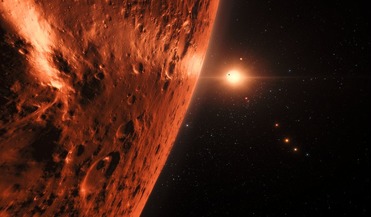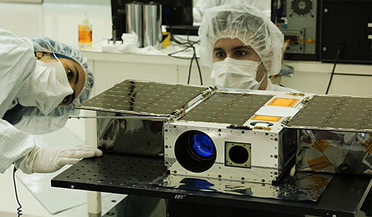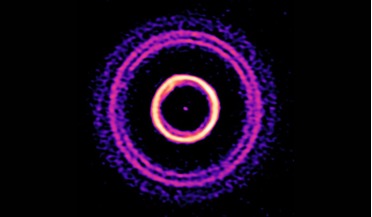 01 September 2017
TRAPPIST-1 planets could contain substantial amounts of water
01 September 2017
TRAPPIST-1 planets could contain substantial amounts of water
... atmosphere, where ultraviolet sunlight breaks molecules apart, ultraviolet starlight can break water vapour in the atmospheres of exoplanets into hydrogen and oxygen.” This happens when photons of a certain energy break the bonds of molecules into...
 14 December 2017
AI detects eighth planet orbiting distant sun
14 December 2017
AI detects eighth planet orbiting distant sun
Scientists using a neural network to search through the enormous Kepler dataset have found an eighth planet in a distant exoplanet solar system known as Kepler 90. This is the first system other than our own that has been ...
 23 April 2018
CubeSats lead the way for new NASA missions
23 April 2018
CubeSats lead the way for new NASA missions
..., and works similar to TESS by allowing researchers to monitor the brief drop in brightness of nearby stars, when a transiting exoplanet blocks out the starlight as it passes in front of its host star. The mission objective was to test whether...
 17 June 2019
Filling in the gaps of Jupiter-like planet formation
17 June 2019
Filling in the gaps of Jupiter-like planet formation
... and other past radial velocity observations – which looks for telltale wobbles in a star’s motion to help locate an exoplanet – as they look at planets closer in to their host stars. GPIES has helped broaden that search by counting planets...
 29 April 2018
Atmospheric Evolution on Inhabited and Lifeless Worlds
29 April 2018
Atmospheric Evolution on Inhabited and Lifeless Worlds
... probably not fully engaged with living on this one. Exoplanets have been a topic of interest – in both scientific ... of the topic and its implications, to the extent that exoplanets are now a serious part of university curricula and the subject...
 June 2018
Publish or perish: the astronomer’s dilemma
June 2018
Publish or perish: the astronomer’s dilemma
... they pass in front of their bright parent stars and create a catalogue of targets for future exoplanet characterisation observations. In contrast, the community and the system do have a definition of failed research, viz. the opposite of ...